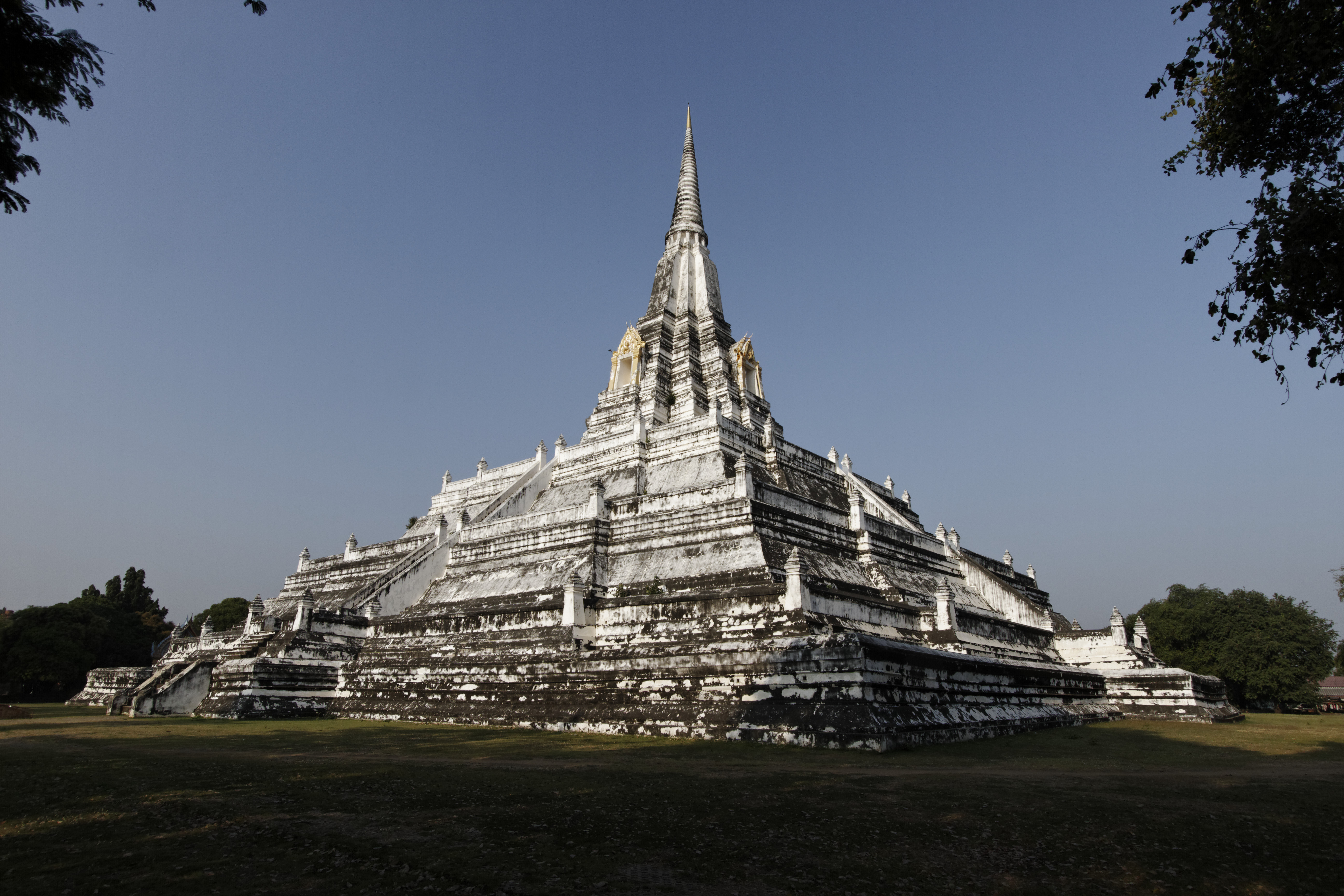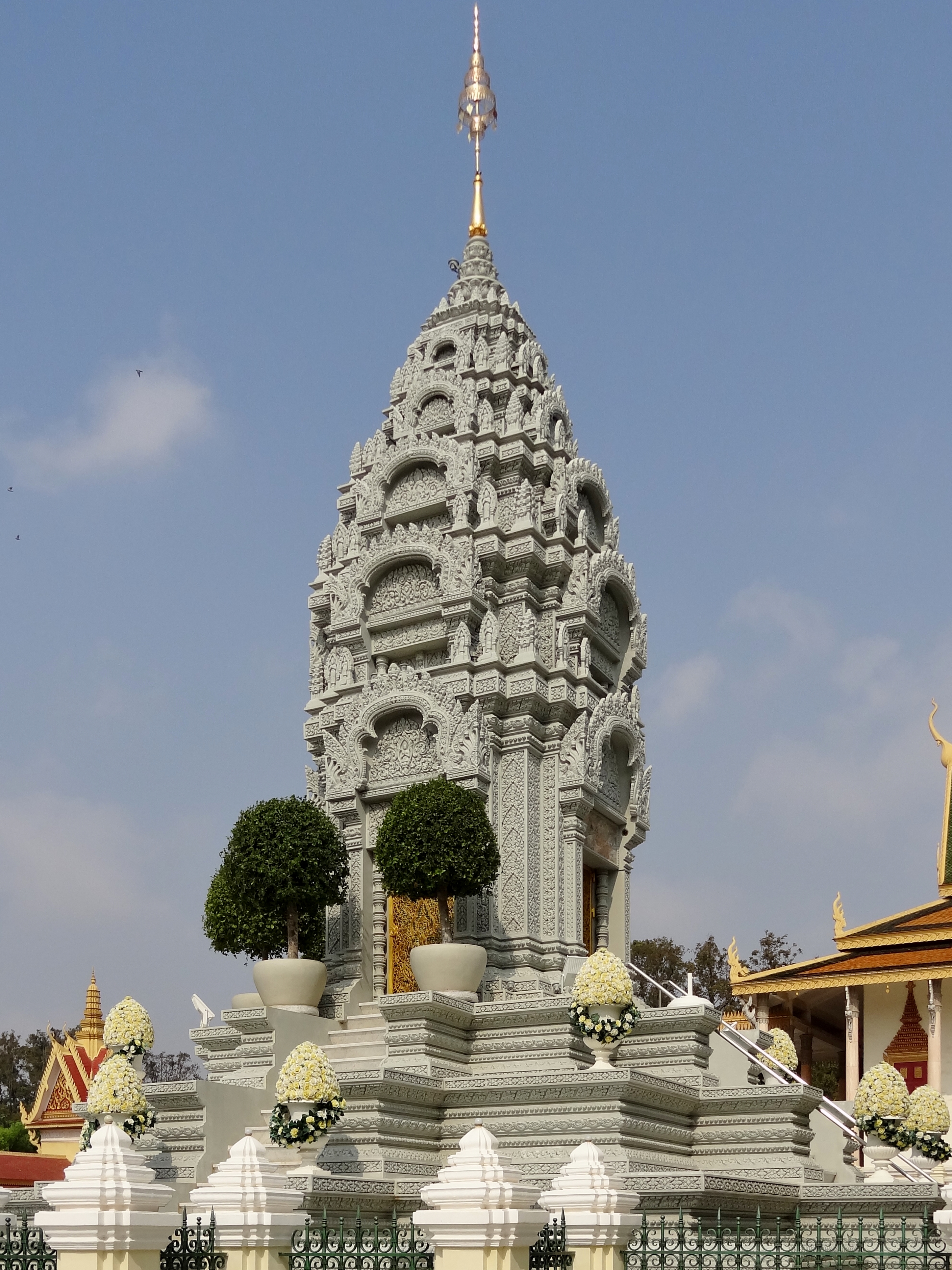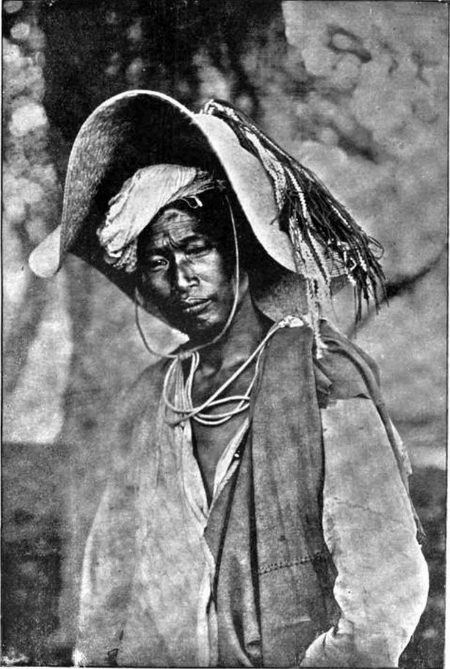|
Chaophraya Phitsanulok
Chaophraya Phitsanulok (, 1719– November 1768), personal name Rueang () or Boonrueang (), was governor of Phitsanulok city with the noble title Chaophraya Surasi Bisanuvadhiraj (), from 1732 to 1767. He was governor during the reign of King Borommakot, until the fall of the Ayutthaya Kingdom during the reign of King Ekkathat. In 1768, he proclaimed himself King Rueang of Phitsanulok, and he declared Phitsanulok and part of Nakhon Sawan a new independent state.Patit Paban Mishra. (2010). The History of Thailand: The Greenwood Histories of the Modern Nations. Santa Barbara, CA : ABC-CLIO. 182 pp. He was also known as Prince Rueang, the King of Siam. His descendants were bestowed the Thai noble surname Rochanakul (), a patronymic from Rueang’s family, by King Vajiravudh, Rama VI.Royal Proclaim of Surname Issuing No. 5 : ประกาศพระราชทานนามสกุล ครั้งที่ ๕ (in Thai). Royal Thai Government Gazette Vol. 30, p. 1,246. 14 ... [...More Info...] [...Related Items...] OR: [Wikipedia] [Google] [Baidu] |
Royal Thai General System Of Transcription
The Royal Thai General System of Transcription (RTGS) is the official system for rendering Thai words in the Latin alphabet. It was published by the Royal Institute of Thailand in early 1917, when Thailand was called Siam. It is used in road signs and government publications and is the closest method to a standard of transcription for Thai, but its use, even by the government, is inconsistent. The system is almost identical to the one that is defined by ISO 11940-2. Features Prominent features of the system are: *It uses only unmodified letters from the Latin alphabet without diacritics. *It spells all vowels and diphthongs with vowel letters: , , , , . **Single letters , , , , are monophthongs (simple vowels), with the same value as in the International Phonetic Alphabet (IPA). ** Digraphs with trailing are monophthongs; , , sound like respectively. **Digraphs and trigraphs with trailing , , are diphthongs and indicate IPA respectively. * It uses consonants as in ... [...More Info...] [...Related Items...] OR: [Wikipedia] [Google] [Baidu] |
Luang Wichitwathakan
Major-General Luang (title), Luang Wichitwathakan (also known as just Wichit Wichitwathakan) (; zh, 金良) (11 August 189831 March 1962) was a Thai politician, diplomat, historian, novelist, and playwright. He is credited with changing the name of the country from Siam to Thailand. Luang Wichitwathakan was prominently engaged in politics and the modernization of Thailand and was in his time the most important figure in the establishment of Thai nationalism and Thai identity. He was the chief ideologue and creator of cultural campaigns during the pre-World War II military rule of Field Marshal Plaek Pibulsonggram. Early life Wichitwathakan was born Kim Liang (Chinese: 金良), the son of a merchant in Uthai Thani province. According to a cousin, Wichitwathakan's paternal grandfather was Chinese. He received his primary education in a Buddhist temple school in Uthai Thani and continued the Buddhist education at Wat Mahathat Yuwaratrangsarit, Wat Mahathat in Bangkok where he exc ... [...More Info...] [...Related Items...] OR: [Wikipedia] [Google] [Baidu] |
Wat Phu Khao Thong-020
A wat (, ; , ; , ; ; , ) is a type of Buddhist and Hindu temple in Cambodia, Laos, East Shan State (Myanmar), Yunnan (China), the Southern Province of Sri Lanka, and Thailand. Etymology The word ''wat'' is borrowed from the Sanskrit ''vāṭa'' (Devanāgarī: वाट), meaning "enclosure". The term has varying meanings in each region, sometimes referring to a specific type of government-recognised or large temple, other times referring to any Buddhist or Hindu temple. Overview In Buddhism, a ''wat'' is a Buddhist sacred precinct with vihara, a temple, an edifice housing a large image of Buddha and a facility for lessons. A site without a minimum of three resident ''bhikkhu''s cannot correctly be described as a wat although the term is frequently used more loosely, even for ruins of ancient temples. As a transitive or intransitive verb, ''wat'' means to measure, to take measurements; compare ''templum'', from which ''temple'' derives, having the same root as ''templa ... [...More Info...] [...Related Items...] OR: [Wikipedia] [Google] [Baidu] |
Shan State
Shan State (, ; , ) is a administrative divisions of Myanmar, state of Myanmar. Shan State borders China (Yunnan) to the north, Laos (Louang Namtha Province, Louang Namtha and Bokeo Provinces) to the east, and Thailand (Chiang Rai Province, Chiang Rai, Chiang Mai Province, Chiang Mai and Mae Hong Son Provinces) to the south, and five administrative divisions of Myanmar in the west (Kachin State, Mandalay Region, Kayin State, Kayah State, and Sagaing Region). The largest of the 14 administrative divisions by land area, Shan State covers 155,800 km2, almost a quarter of the total area of Myanmar. The state gets its name from the Burmese name for the Tai peoples: "Shan people". The Tai (Shan) constitute the majority among several ethnic groups that inhabit the area. Shan State is largely rural, with only three cities of significant size: Lashio, Kengtung, and the capital, Taunggyi. Taunggyi is northeast of the nation's capital Naypyitaw. The Shan state, with many ethnic groups ... [...More Info...] [...Related Items...] OR: [Wikipedia] [Google] [Baidu] |
Alaungpaya
Alaungpaya (, ; also spelled Alaunghpaya or Alaung-Phra; 11 May 1760) was the founder and first emperor of the Konbaung dynasty of Burma. By the time of his death from illness during his Burmese–Siamese War (1759–60), campaign in Siam, this former chief of a small village in Upper Burma had unified Burma, subdued Manipur, conquered Lan Na and launched successful attacks against the French Indies Company, French and East India Company, British East India companies who had given help to the Restored Hanthawaddy Kingdom. He added settlements around Dagon township, Dagon, and called the enlarged town Yangon.Letwe Nawrahta and Maha Sithu of Twinthin 1961: 190–191 He is considered one of the three greatest List of Burmese monarchs, monarchs of Burma alongside Anawrahta and Bayinnaung for unifying Burma for the third time in History of Burma, Burmese history. Background The future king was born Aung Zeya ( "Successful Victory") at Shwebo, Moksobo, a village of a few hundred hous ... [...More Info...] [...Related Items...] OR: [Wikipedia] [Google] [Baidu] |
Hsinbyushin
Hsinbyushin (, , ; ; 12 September 1736 – 10 June 1776) was the third emperor of the Konbaung dynasty of Burma (Myanmar) from 1763 to 1776. The second son of the dynasty founder Alaungpaya is best known for his wars with Qing China and Siam, and is considered the most militaristic king of the dynasty. His successful defense against four Qing invasions preserved Burmese sovereignty. His 1765 invasion of Ayutthaya brought an end to the Ayutthaya Kingdom. The near simultaneous victories over Qing and Siam has been referred to as testimony "to a truly astonishing elan unmatched since Bayinnaung." He also raised the Shwedagon Pagoda to its current height in April 1775. The deputy commander-in-chief during his father's reunification campaigns (1752–1759), Hsinbyushin as king pursued an expansionist policy against his neighbors. By 1767, his armies had put down a rebellion in Manipur, captured the Laotian states, sacked and destroyed Ayutthaya, and driven back two invasions by C ... [...More Info...] [...Related Items...] OR: [Wikipedia] [Google] [Baidu] |
Tribute
A tribute (; from Latin ''tributum'', "contribution") is wealth, often in kind, that a party gives to another as a sign of submission, allegiance or respect. Various ancient states exacted tribute from the rulers of lands which the state conquered. In the case of alliances, lesser parties may pay tribute to more powerful parties as a sign of allegiance. Tributes are different from taxes, as they are not collected in the same regularly routine manner that taxes are. Further, with tributes, a recognition of political submission by the payer to the payee is uniquely required. Overview The Aztec Empire is another example, as it received tribute from the various city-states and provinces that it conquered. Ancient China received tribute from various states such as Japan, Korea, Vietnam, Cambodia, Borneo, Indonesia, Sri Lanka, Nepal, Myanmar and Central Asia. Aztec Empire Tributes as a form of government The Aztecs used tributes as a means for maintaining control over con ... [...More Info...] [...Related Items...] OR: [Wikipedia] [Google] [Baidu] |
Ne Myo Thihapate
Ne Myo Thihapate (; ), also spelled Nemyo Thihapte and Nemiao Sihabodi (),Rajanubhab, D., 2001, Our Wars With the Burmese, Bangkok: White Lotus Co. Ltd., was a general in the Royal Burmese Army of Konbaung Dynasty of Burma (Myanmar). The general is best known for conquering the Ayutthaya Kingdom, along with Gen. Maha Nawrahta, in April 1767. Career The general began his military career as one of the sixty eight elite commanders chosen by King Alaungpaya in 1752. He became one of the "most distinguished soldiers" during Alaungpaya's reunification campaigns (1752–1757). Laos and Siam (1765–1767) In 1764, King Hsinbyushin decided to renew the war against Siam. The king selected Thihapate and Maha Nawrahta as joint commanders to lead another invasion. Thihapate was to lead the northern invasion route from Chiang Mai while Maha Nawrahta was to lead the southern route from Martaban (Mottama). In early 1765, Thihapate with a 20,000-strong force began his operations by starting w ... [...More Info...] [...Related Items...] OR: [Wikipedia] [Google] [Baidu] |
Naungdawgyi
Dabayin Min (), commonly known as Naungdawgyi ( ; 10 August 1734 – 28 November 1763) was the second king of Konbaung Dynasty of Burma (Myanmar), from 1760 to 1763. He was a top military commander in his father Alaungpaya's reunification campaigns of the country. As king, he spent much of his short reign suppressing multiple rebellions across the newly founded kingdom from Ava (Inwa) and Toungoo (Taungoo) to Martaban (Mottama) and Chiang Mai. The king suddenly died less than a year after he had successfully suppressed the rebellions. He was succeeded by his younger brother Hsinbyushin. Early life Naungdawgyi was born Maung Lauk () to Yun San and Aung Zeya (later King Alaungpaya) on 10 August 1736 (Tuesday, 11th waxing of Wagaung 1096 ME) in a small village of Moksobo, about 60 miles northwest of Ava (Inwa).Maung Maung Tin Vol. 1 1905: 263 He was the eldest child of the couple's nine children. In 1736, his father became the chief of Moksobo, and the deputy chief of the M ... [...More Info...] [...Related Items...] OR: [Wikipedia] [Google] [Baidu] |
Narathip Praphanphong
Prince Vara Varnakara, the Prince Naradhip Prabandhabongse (20 November 1861 – 11 October 1931) was a Prince of Siam (later Thailand). He was a member of Siamese royal family is a son of King Mongkut and Chao Chom Manda Khian. His mother was (is a daughter of On Sirivan and Im Sirivan). His full name was Phra Chao Borommawong Thoe Phra Ong Chao Worawannakon Khommaphra Narathip Praphanphong (). One of his sons is Prince Wan Waithayakon, who was the President of the Eleventh Session of the United Nations General Assembly (1956–1957). Prince Narathip died 11 October 1931 at the age 69. Children # ''Mom Chao'' (HSH Princess) Barabimalabanna Voravan (1890 - 1981), married to Rajani Chamcharas, the Prince Bidyalongkorn. # ''Mom Chao'' (HSH Prince) Vanna Vaidhayakara (1891 - 1976), later inherited the title HRH the Prince Narathipong Praphan II. He was President of the Eleventh Session of the United Nations General Assembly (1956 - 1957). # ''Mom Chao'' (HSH Princess) Va ... [...More Info...] [...Related Items...] OR: [Wikipedia] [Google] [Baidu] |
Lèse-majesté
''Lèse-majesté'' or ''lese-majesty'' ( , ) is an offence or defamation against the dignity of a ruling head of state (traditionally a monarch but now more often a president) or of the state itself. The English name for this crime is a modernised borrowing from the medieval French, where the phrase meant . In classical Latin, meant 'hurt/violated majesty' or 'injured sovereignty' (originally with reference to the majesty of the sovereign people, in post-classical Latin also of the monarch). The concept of ''lèse-majesté'' expressed the idea of a criminal offence against the dignity of the Roman Republic of ancient Rome. In the Dominate, or late Empire period (from the 3rd century CE), the Roman Emperor, emperors continued to distance themselves from the republican ideals of the Roman Republic, and increasingly equated themselves with the state. Although legally the (the emperor's official title, meaning, roughly, 'first citizen') could never become a sovereign because t ... [...More Info...] [...Related Items...] OR: [Wikipedia] [Google] [Baidu] |






